| Umělec magazine 2008/1 >> Berlin Taipei Round Trip | List of all editions. | ||||||||||||
|
|||||||||||||
Berlin Taipei Round TripUmělec magazine 2008/101.01.2008 Michael LaFond | world | en cs de es |
|||||||||||||
|
EXPERIMENCITY MEETS TREASURE HILL
Western creative cities such as Berlin, Germany are shrinking while eastern metropolises like Taipei, Taiwan have the mixed-blessing of a still growing creative/destructive capitalism. Like many old world cities Berlin boasts a seemingly endless supply of affordable vacant land and buildings, even in the inner-city, which continues to draw masses of young creatives. Taipei’s growth on the other hand has recently produced the tallest building in the world and immense pressures to economically exploit every last inch of land. While Berlin’s identity is increasingly post-rational, leading to new flexibilities and an emphasis on the cultural economy, in Taipei the legitimacy of exogenous Western rational planning models is finally being questioned, revealing an alternative urban “organic-ness” which appears chaotic yet energetic, intrinsic and un-designable. And whereas Berlin has constructively worked with hundreds of building occupations in recent decades, Taipei also has its informal, illegal and creative processes of housing and construction. Seemingly very different urban challenges in places half-way around the planet from each other are being dealt with by initiatives that have much in common, and cultural planning activists in these cities have been exchanging strategies over recent years, for example to support a sustainable and cultural (re)development initiative working with Treasure Hill, a pre-modern, organic village in Taipei. id22: Institute for Creative Sustainability based in Berlin has been invited to help organize actions and events in cooperation with the OURs planning group from Taipei. id22: In the Post-Berlin-Wall era, id22 has been exploring links between culture and community through actions and events, networks and the transfer of experiences, working with cultures of sustainable development, locally and internationally. Based for many years in Berlin’s ufaFabrik – an established example of an integrated cultural-ecological-housing development emerging out of the 1979 squatting of abandoned film studios in West Berlin, id22 is now at home in the MARIE cooperative building community, in an East Berlin neighborhood. id22 coordinates among other things the Experimentcity Network, with events, publications and internet pages, and through this supports transformational and communicative urban initiatives, with a focus on self-organized housing projects. OURs It was not only Berlin but also Taipei that enjoyed a peaceful revolution in 1989 when actions like the “Snail-Without-a Shell Alliance” gathered more than 50,000 people for a protest and overnight occupation of a key intersection in the city’s downtown. In the following year, members of this social movement established the NGO OURs (“Organization of Urban Re’s"). OURs has been one of the foremost NGOs in Taiwan to focus on socio-spatial practice and the critique of urban policy. “Re’s” refers to actions like Reform, Rediscovery, and Reflection, etc. Through this, socially oriented students and professionals, from architecture, urban planning, and other fields, have come together to devote themselves to the promotion of urban reforms in Taiwan through a multidisciplinary platform built by OURs. Treasure Hill This modest hill-side village, nestled between muddy river waters and countless highway ramps on the city’s edge, is for some a romantic painting and for others an eyesore and a painful reminder of Taipei’s rural, immigrant past. Treasure Hill, for centuries, and until today a sacred temple site; during the World War a military post, has finally become an organic squatter community at the foot of Guan-Yin hill on the Hsin-Dian River. Disadvantaged people built their own shelters here between the late 1940s and the 1970s, but like so many shanty-towns never officially existed on the City maps, and was threatened on numerous occasions with demolition to make way for a park. Throughout Taipei’s recent decades of development, Treasure Hill has been concealed, and thus has escaped the violent gentrification processes of cultural modernization. To some, this kind of illegal settlement brings back memories of Taipei’s recent history, when two waves of immigration--the influx of immigrants from China in 1949 and rural migration into the city two decades later--created an extreme shortage of housing. “As much as 30 percent of the buildings in Taipei were illegal in the late 1950s and 60s. People were building structures right as you walked down streets such as Sinyi Road,” said John Liu, chairperson of National Taiwan University’s Graduate Institute of Building and Planning. “Individually, these houses are not significant but, taken together, they represent a whole community. For example, all of the materials they use are recycled, such as the bricks. You can see it from the way the walls are built,” said Kang Min-jay, associate professor of Tamkang University’s Department of Architecture, as well as an OURs member. In addition to using recycled materials, many of the residences were built over decades, with each new story of a house being constructed to accommodate a new generation of the family, as room was needed. City resettlement plans in the early 1990s led to violent protests from Treasure Hill residents supported by local university students. First came the idea to protect Treasure Hill as a sort of monument or reminder of Taipei‘s immigrant past. "We learned that simply preserving the area as a museum or memorial was the wrong idea. What people really needed was affordable, low-income housing," Liu said. His alliance ultimately triumphed in 2003, reaching a compromise with city officials who designated OURs to look after the property for an interim period with a small operating budget. In exchange for the city's pledge to ensure low-income housing for Treasure Hill residents, the city would also gain use of the area for an artist-in-residence program. The area would be designated a "culturally significant area," a new category for preservation-minded works, just a step below that of historically important sites, according to Liu. Since 2003, OURs has organized meetings among community members, brought in student groups to help clean up and beautify the community, and initiated an artists’ program, which utilized abandoned apartments. The artist-in-residence program started in February, 2004. Artists already participating have had a profound impact on the community, said Lin Yu-chou of OURs. One of the artists was photographer Yeh Wei-li, who chose to photograph all the 80-odd residents of the community in "Phase One: The Portrait Project." This grew into a three-year undertaking that included a photo gallery, community tea shop, archive and garden, which were grouped under the title "Treasure Hill Tea + Photo." GAPP Treasure Hill Over the years, OURs and partners have been coordinating a variety of initiatives. These include the Treasure Hill New Discovery Film Festival and the Global Artivists Participation Project (GAPP). OURs also supports policies of preservation and revitalization and new visions that respect the community's existing fabric while fulfilling the regeneration concept of “symbiosis” to incorporate production and ecology in communal living. In order to support more than just the emergence of an Artists’ Village at Treasure Hill, GAPP invited several groups of artivists to work with the settlement, leading to a series of writings, installations, performances, and actions based on artistic representations. At this fringe location which really had no contact with the formal art world, the multilayered interference and dialogues - from landscape art and tectonics, photography, installation art, music, audio installation, to ecological architecture, theater, etc. - suddenly brought in new energies. The “artless” community was asked to take part in art projects or to have daily contact with art in order to get attention for the village and hold off eviction. Actions and installations were often surrealistic, but here art was seen as a ticket to permanent residency, practically speaking, putting Treasure Hill not just on the City’s but on international Art Map. The concept of artivism was employed here to explore new possibilities of art-involved planning. Artivism, a conscious combination of art and activism, was adopted to demonstrate a more radical approach and value-based attitude to engage in social-spatial issues through arts projects. Artivism was an intentional attempt to support community and environmental concerns and collaborate with the participant subjects. GAPP strategically engaged high-concept and avant-garde arts with the self-organized community to get as much participation from the community as possible. id22 was invited to join the GAPP program, bringing cultural activists from Berlin’s ufaFabrik, Seattle’s Cascade neighborhood and Barcelona’s Ateneu de 9 Barris Center together with Treasure Hill residents as well as Taipei students, planners and artists. id22 offered a combination of actions and presentations, all involving exchanges of ideas and experiences, between the projects and people of these various cultures and cities. Emphasized were processes of sustainable community development, and integrations of culture and ecology with public participation. More specifically, id22 activities in Treasure Hill were based on Berlin projects like the Creative Sustainability & Self-Help Center, combined with an artists-in-residence program. Also proposed and demonstrated were concepts for a guest house. Actions included everything from workshops for dance and movement to street theater and a stencil workshop which led to the community’s mural painting at the entrance road to Treasure Hill. While the id22 artivists did not speak or understand anything of the Chinese dialects spoken in Treasure Hill, the locals did not understand much of the European languages, and so the communication was mainly through the artistic mediums of movement and painting as well as food and drink. The planned-in-advance projects were all dramatically revised and adjusted with respect to the local situation and context which was often surprising and challenging. The work and office spaces had no heating and very little infrastructure at all, like the village apartments, which meant when it was raining, which it did a lot, that the spaces were all cold and damp. Some of the best interaction came through the food and drink events, offering everything from American pancakes to Spanish tortillas, German sausage and a lot of Chinese vegetables harvested from the village garden. The actions mostly took place in the “village square,” a large area that at times was home to film festivals, at others to meetings, movement workshops and of course parties. Visual and physical communication allowed a merging of Taipei-Senior-Citizen-Style tai-chi, with Berlin style yoga and stretching. An international garden was planted in a community action bringing together flower seeds from Berlin, Barcelona, Seattle and Taipei. The “village chief,” a tough and wiry elderly lady, had her own home right on the square, so she could observe everything going on and quickly join in if need be. As a cultural, community development initiative, the series of events and actions was successful in bringing together a wide range of people and ideas and, more importantly, in setting free and mobilizing new and unforeseen energies. A “sensitive” coming together of local and international, artistic-provocative and traditional-conservative energies can and did lead to a belief in new possibilities. Hope was generated for visions of Treasure Hill that would integrate the local needs for security and the familiar, with the need to develop additional identites and layers for the village fabric, in order to find a sustainable future, in social as well as in economic and cultural terms. Such processes call for structured as well as flexible moderation, which was cooperatively managed by id22 with partners from OURs. Finally, OURs has been helpful in negotiating a long-term settlement with Treasure Hill residents. This has included relocation of residents to temporary housing while the buildings are being restored. The occupiers received a cash payout of $22,000 for each residence, in line with Taipei City allocations for reclaimed property, but gave up any legal rights and will have to pay rent once their residences are restored, said Liu. For artists and government officials alike, the Treasure Hill community is a work in progress, a project that is breaking new ground in the way city planners are addressing important issues such as low-income housing, preservation and multiple-use facilities. Furthermore, Liu said, the project is generating lots of international interest and could perhaps help countries such as China develop a program to deal with rural migration and the preservation of historic hutongs and other settlements. The Taipei City Department of Cultural Affairs is now engaged in a two-year restoration project to preserve Treasure Hill, and future goals of OURs and the Treasure Hill Artivists CO-OP include four tasks: “Treasure Hill Homeland,” “Artivists in Residency Program,” “International Youth Hostel” and “Eco-architecture and Environmental Learning.” These programs will be the pillars of physical renovation between 2008 and 2009 with the following projects: • Neighborhood Self-Help Center implementing the ideals of caring for the disadvantaged, providing employment counseling, developing indigenous industries, and inviting artists, social workers and students to get involved with the community, to foster the mechanism of participation by residents in the operation and management. • Artivists in Residency Program selecting cross-boundary artists and artist groups for the program, providing them studio spaces to work, to create, and to live free of rent. Artists are obliged to prepare their own works in accordance with Open Studio and small group exhibitions to contribute to the community in return. • Exhibitions and Activities hosting art lectures, forums and exhibitions regularly to facilitate creative accumulation and art involvement in the community. • Weekend Art Bazaar holding outdoors art bazaar to create a leisurely atmosphere that encourages the exchange of creative ideas and DIY art objects. • Land Art and Organic Garden based on the concept of communal farming, inviting artists to collaborate with local organic farmers, applying eco-technology and creating land art installations, promoting the environmental ethics of sustainability. • Creative Shop combining the musical activities with the community grocery services, providing citizens a semi-public interface to better understand the community. • Collective Bookstore establishing the symbolic space of discourse as the basis of experimenting, discussing and developing progressive issues of cultural and social re-envisioning. • Volunteers Training Program recruiting and training volunteers to help give guided tours, to maintain the venue, etc. The Taipei-Berlin id22-OURs exchanges have been almost entirely supported with resources coming from Taipei. Taiwan is in a very uncomfortable situation as mainland China every now and then threatens to “retake” this lost province, and so this island State needs international partners and attention for its issues. The western world chooses to do business with a very undemocratic China, in the process avoiding Taiwan like a problem child, which itself, as much of eastern Europe, is now well on its way to being an established democratic land. And so there is little interest from public funders in bringing Taipei activists to Berlin. Nonetheless, OURs cultural planners have also been active in Berlin in recent years, participating for example in experimentcity exhibitions, and bringing their own ideas and practices of cultural planning to Europe.
01.01.2008
Recommended articles
|
|||||||||||||
|
04.02.2020 10:17
Letošní 50. ročník Art Basel přilákal celkem 93 000 návštěvníků a sběratelů z 80 zemí světa. 290 prémiových galerií představilo umělecká díla od počátku 20. století až po současnost. Hlavní sektor přehlídky, tradičně v prvním patře výstavního prostoru, představil 232 předních galerií z celého světa nabízející umění nejvyšší kvality. Veletrh ukázal vzestupný trend prodeje prostřednictvím galerií jak soukromým sbírkám, tak i institucím. Kromě hlavního veletrhu stály za návštěvu i ty přidružené: Volta, Liste a Photo Basel, k tomu doprovodné programy a výstavy v místních institucích, které kvalitou daleko přesahují hranice města tj. Kunsthalle Basel, Kunstmuseum, Tinguely muzeum nebo Fondation Beyeler.
|







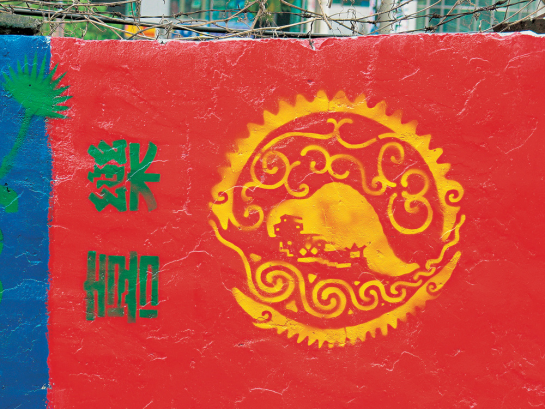
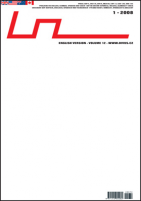





















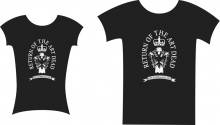
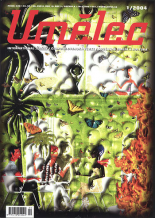
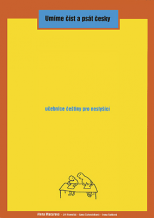
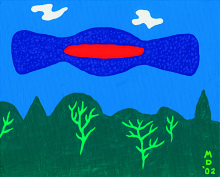


 New book by I.M.Jirous in English at our online bookshop.
New book by I.M.Jirous in English at our online bookshop.
Comments
There are currently no comments.Add new comment